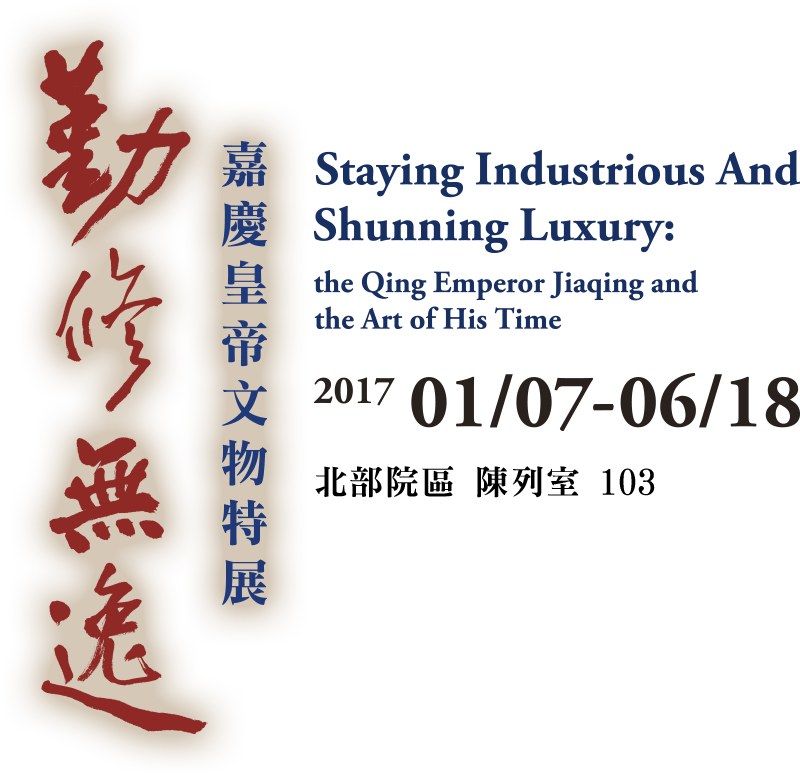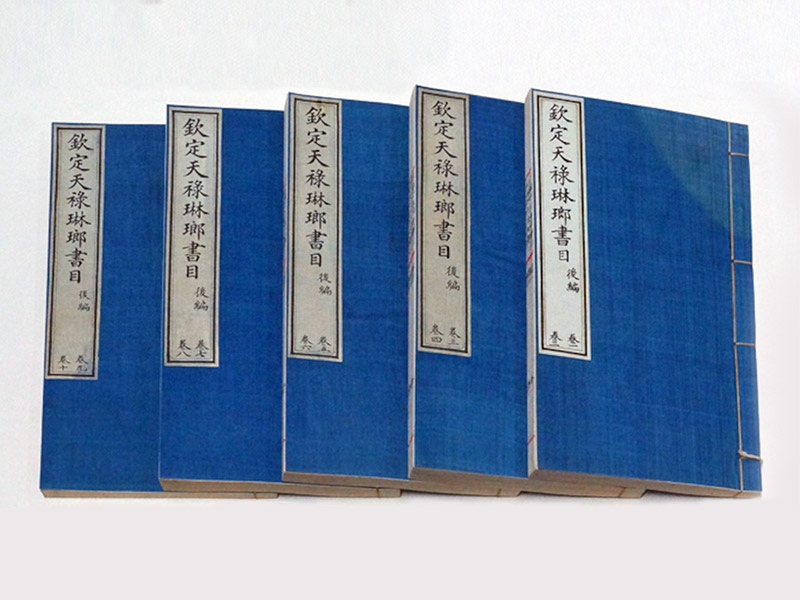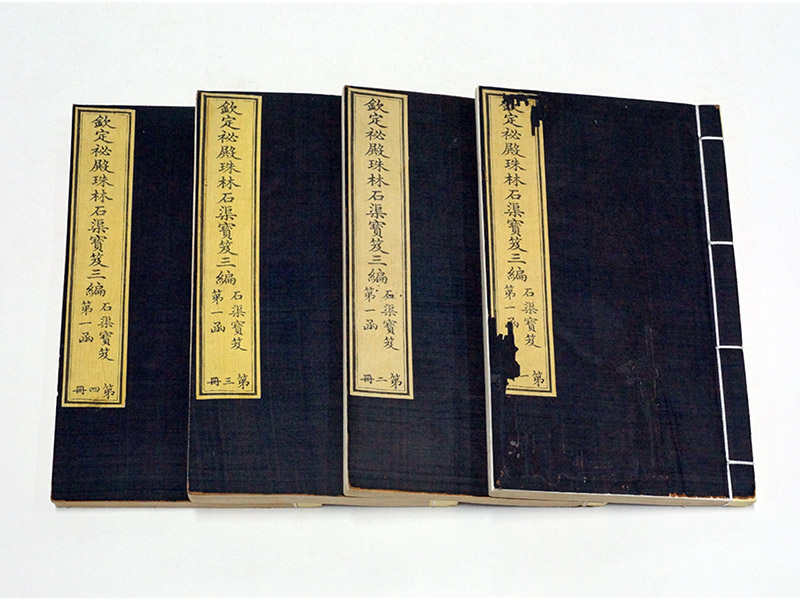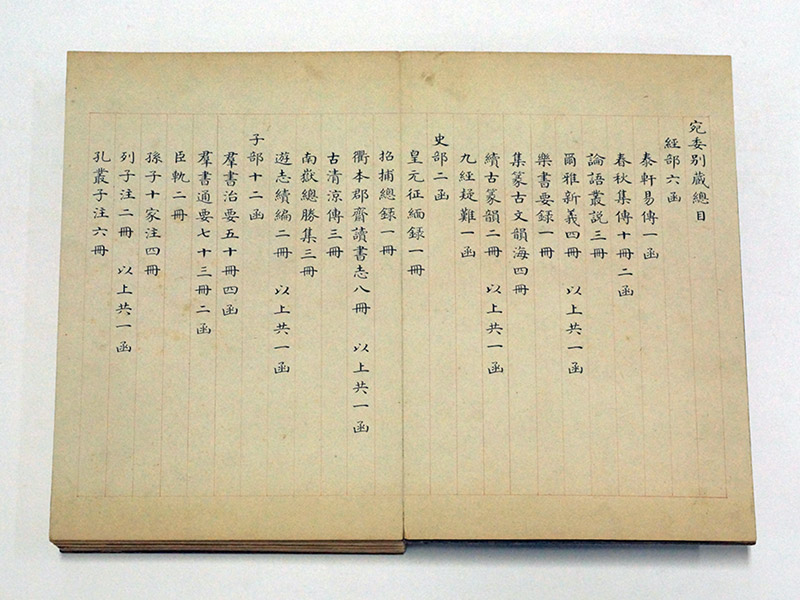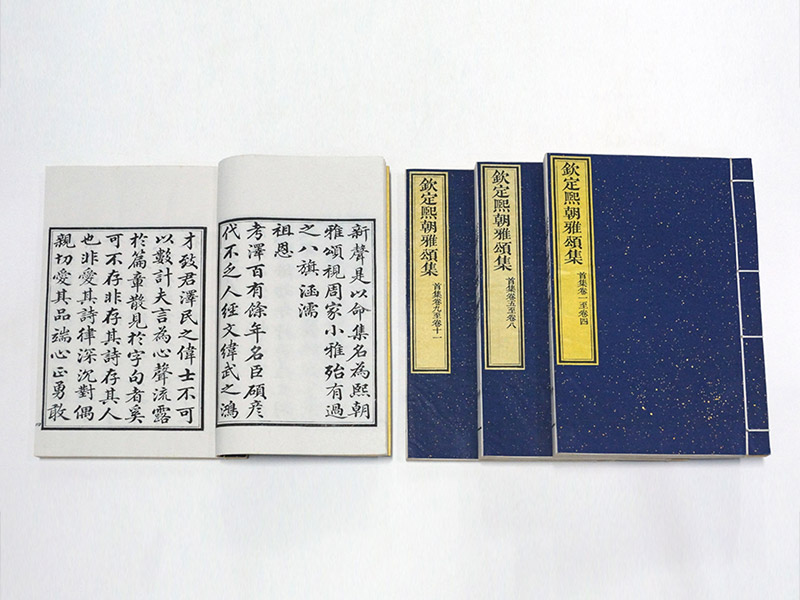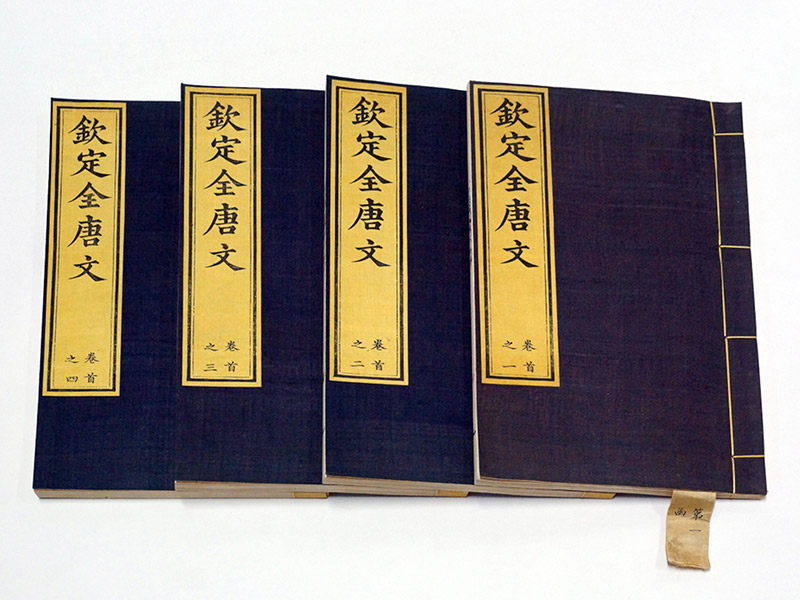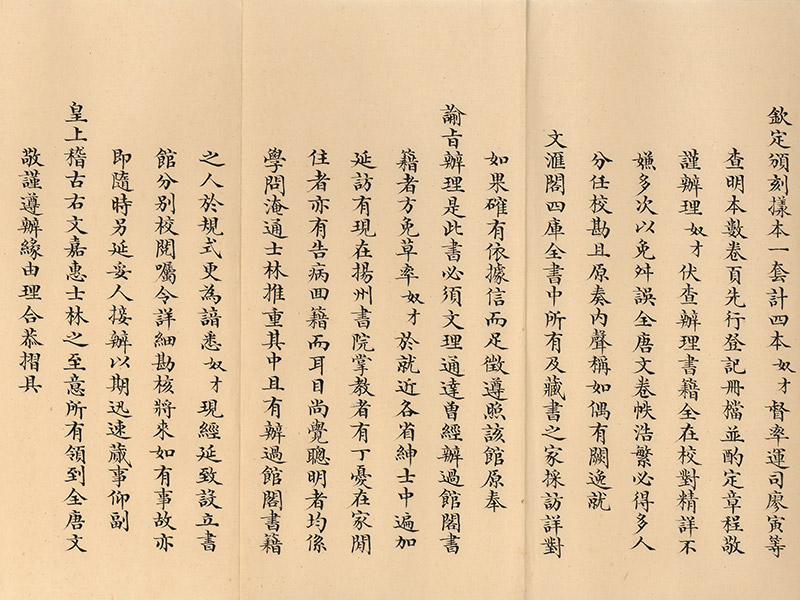After ascending to the throne, the Jiaqing emperor carried on the practice begun during the Qianlong reign of organizing the imperial art collections and publishing their catalogues raisonné. Culturally speaking, Jiaqing's supplementary endeavors to address works of art left out by Qianlong made the collections even more systematic and comprehensive. Politically, his so doing was undoubtedly a manifestation of the legitimacy of his rule. Such catalogues raisonné as the Qinding Midian Zhulin Shiqu Baoji Sanbian (欽定秘殿珠林石渠寶笈三編) and the Qingding Tienlu Linlang Shumu Hobian (欽定天祿琳琅書目後編) were expanded on the foundation that had been laid during the Qianlong reign. However, Jiaqing's cultural enterprise was by no means confined to filling the lacunae in the work of his imperial father; he had many new additions as well, such as the compilation of the collectaneum Wanwei Biecang (宛委別藏) and the publication of the Qinding Xichao Yasong Ji (欽定熙朝雅頌集), the Quan Tangwen (全唐文), the Daqing Huidian (大清會典), and so on. With coverage spanning from literary compositions to legal and legislative institutions, Jiaqing's publishing efforts constituted an important contribution of the cultural development of the Qing dynasty. This section presents a number of essential selections from the Museum's collection of rare books and historical documents, offering the audiences an opportunity to see how the Jiaqing emperor continued and expanded the cultural enterprise initiated by his imperial father.
Qingding Tienlu Linlang Shumu Hobian (Imperially Endorsed Second Catalog of the Tienlu Linlang Library)
- Compiled on imperial order by Peng Yuanrui (1731-1803), et al.
- Manuscript edition of the Imperial Household Department
- Jiaqing reign (1796-1820), Qing dynasty
Qinding Midian Zhulin Shiqu Baoji Sanbian (Imperially Endorsed Third Supplement to the Pearly Forests in the Secret Palace and Treasured Cases of the Stone Moat)
- Compiled on imperial order by Yinghe (1771-1840), et al.,
- Red-lined manuscript edition of the Imperial Household Department
- Jiaqing reign (1796-1820), Qing dynasty
Wanwei Biecang Zongmu Tiyao (Abstract of the General Contents of the Separate Collection of Mt. Wanwei)
- Written by Ruan Yuan (1764-1849)
- Red-lined manuscript edition of the Imperial Household Department
- Jiaqing reign (1796-1820), Qing dynasty
Qinding Xichao Yasong Ji (Imperially Endorsed Poetry by Eight-banner Poets of the Great Dynasty)
- Compiled on imperial order by Tiebao (1752-1824), et al.
- Imprint by Ruan Yuan in Zhejiang between the 9th and 10th year of the Jiaqing reign (1804-1805), Qing dynasty
Qinding Quan Tangwen (Imperially Endorsed Collection of All Preserved Prose-style Literature from the Tang and Five Dynasties)
- Compiled on imperial order by Dong Gao (1740-1818), et al.
- Imprint of the 21st year of the Jiaqing reign in Yangzhou Prefecture
- Qing dynasty
Palace memorial on the receipt of the Quan Tangwen (Collection of All Preserved Prose-style Literature from the Tang and Five Dynasties) and the status of its collation and printing
- Submitted by Akedangga (1755-1822), Salt Supervisor of Huainan and Huaibei
- Dated the 29th day of the 6th month in the 19th year of the Jiaqing reign (August 14, 1814), Qing dynasty
